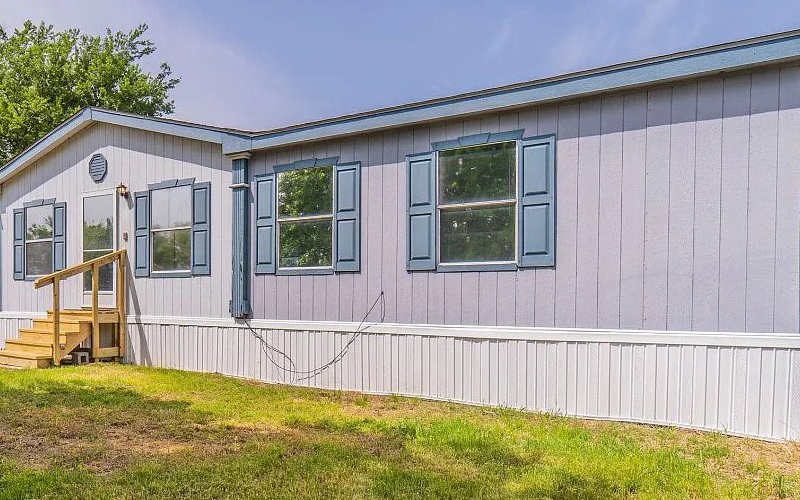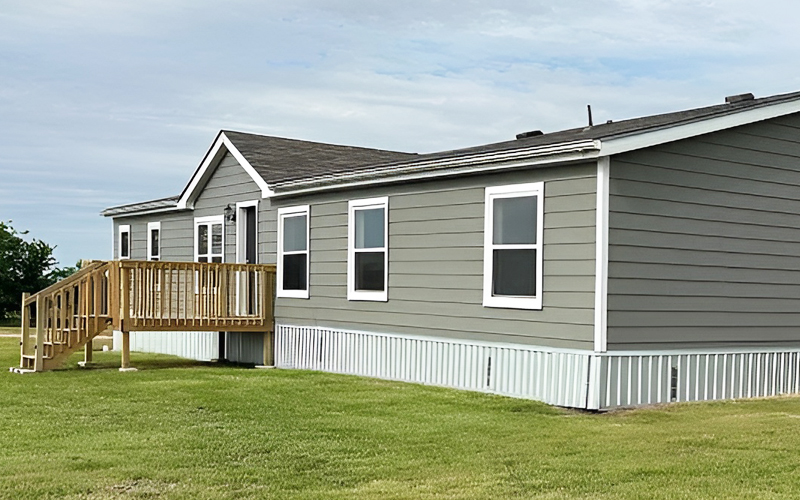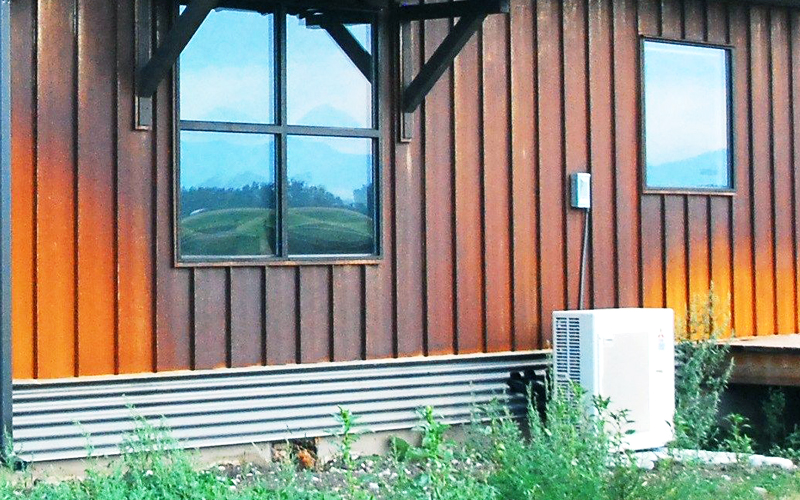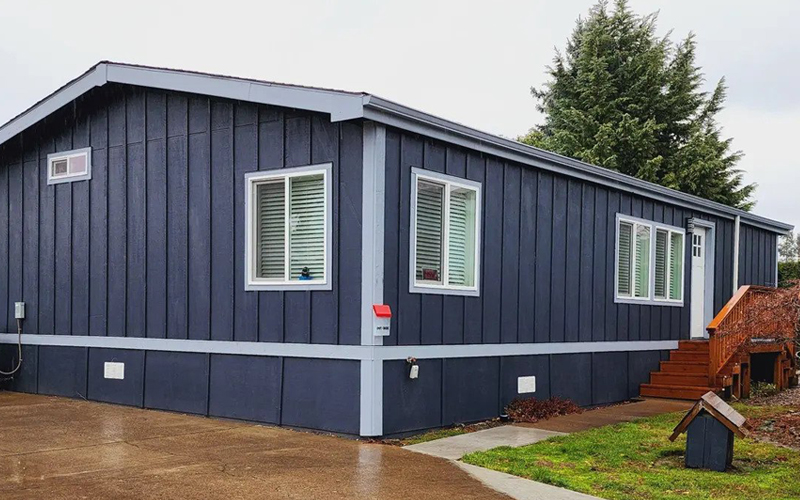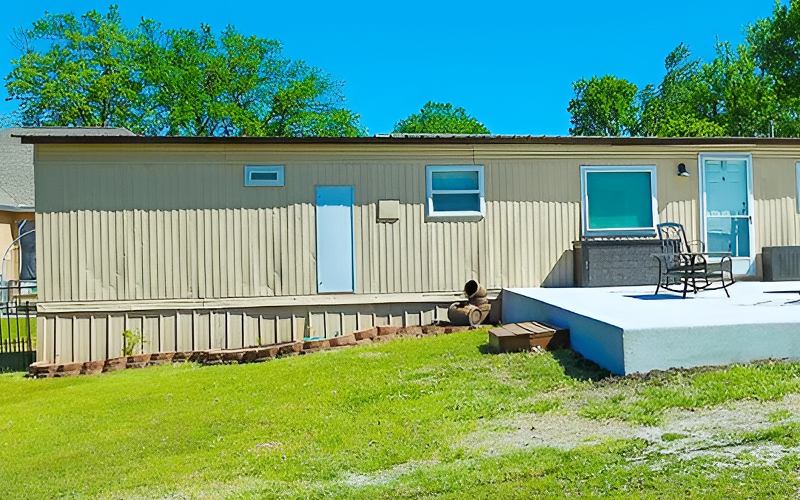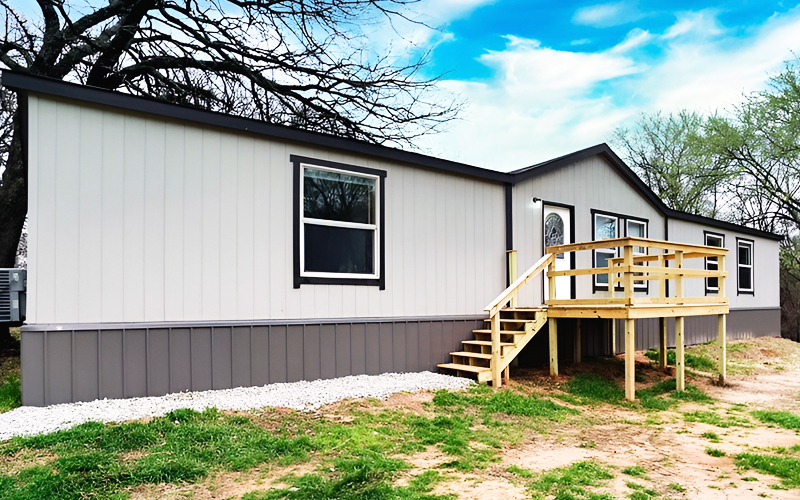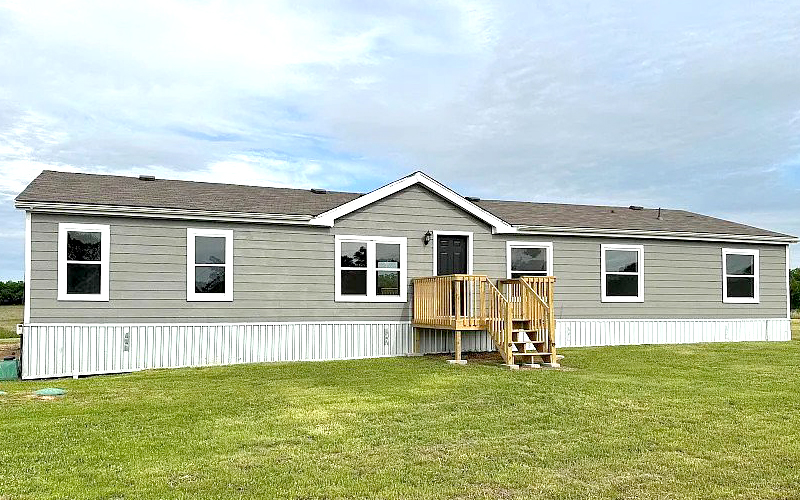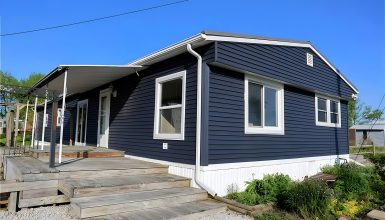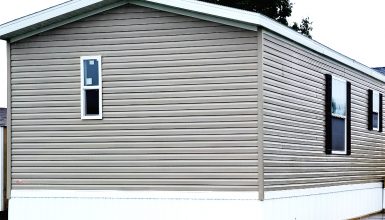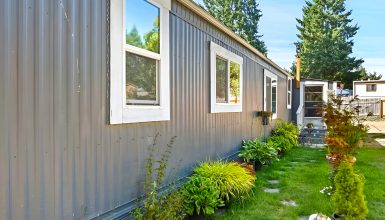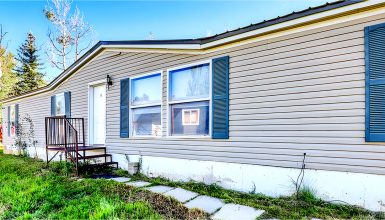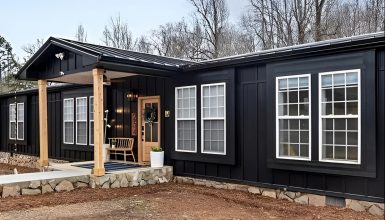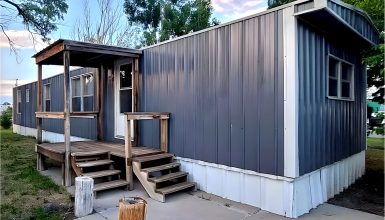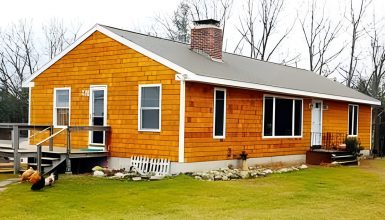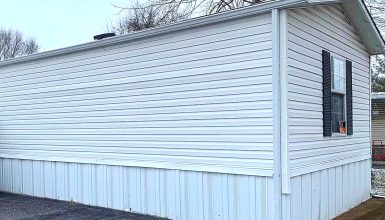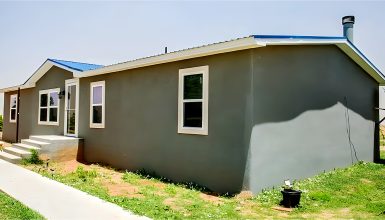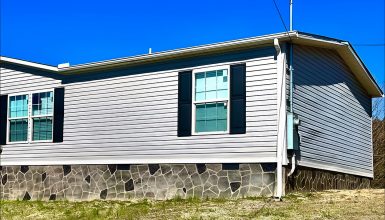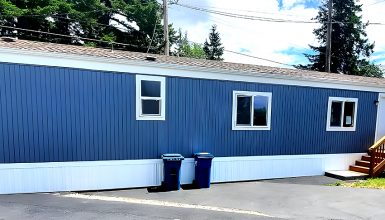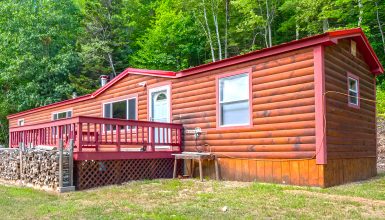You might wonder why choosing a suitable metal siding material and style is important. Well, the right choice can make all the difference! The perfect metal siding not only boosts your home’s curb appeal but also protects it from harsh weather conditions. Plus, with low maintenance requirements, you’ll have more time to enjoy your cozy space. This guide will explore the various metal siding materials and styles. And help you choose the ideal metal siding that complements your mobile home’s aesthetics. Are you ready? Let’s get started!
Types of Mobile Home Metal Siding Materials
Alright, let’s dive into the exciting world of metal siding materials! There are several options available, each with its unique qualities. Let’s examine the most popular choices and discover what makes them stand out.
1. Aluminum Siding
First up, let’s take a closer look at aluminum siding. And discover what makes it a popular choice for many mobile home owners.
Pros
Aluminum siding is known for its lightweight nature, making it easier to handle and install than other metal siding options. It can save you time and effort during the installation process. Besides, it’s an excellent option for those who prefer various color choices. And you can easily paint it to match your desired color scheme.
One of the biggest advantages of aluminum siding is its rust resistance, which is crucial for areas with high humidity or heavy rainfall. This feature helps protect your mobile home from moisture damage and keeps it looking fresh for years.
When it comes to maintenance, aluminum siding is a breeze! A simple wash with soap and water is usually enough to keep it looking clean and shiny. Moreover, aluminum is an energy-efficient material, helping to keep your home cooler in the summer and warmer in the winter.
Cons
However, there are a few weaknesses to consider. Aluminum siding is relatively soft so it can be prone to dents and scratches. It could be a concern if you live in an area with frequent hailstorms or strong winds. Additionally, over time, aluminum siding may be susceptible to fading and chalking due to prolonged sun exposure.
Cost
Installation costs for aluminum siding typically range from $2 to $5 per square foot. This cost is in addition to the material cost, usually between $3 to $7 per square foot.
2. Steel Siding
Now let’s explore steel siding, a popular and durable option that offers several advantages for mobile home owners.
Pros
One of the standout features of steel siding is its strength. It’s significantly more resistant to dents and warping than aluminum siding, making it an excellent choice for homes in areas prone to hailstorms or strong winds. This sturdiness also means that steel siding maintains its shape better over time and requires less maintenance.
Steel siding is known for resisting harsh weather conditions like heavy rain, snow, and wildfires. It’s also resistant to insects, mold, and rot, providing added protection for your mobile home and ensuring a longer lifespan for your siding.
When it comes to customization, steel siding offers a variety of styles, textures, and colors. Many steel siding products come with a factory-applied paint finish designed to be long-lasting and fade-resistant, so your home stays fresh for years.
Cons
However, there are a few downsides to consider. Steel siding can be more expensive than aluminum siding regarding material cost and installation. The added steel weight might also require additional support during installation, which could increase labor costs. Another potential issue with steel siding is its susceptibility to rust if the paint finish is damaged or scratched.
Cost
Steel siding installation costs range from $3 to $6 per square foot. Remember that steel siding material costs are generally higher than aluminum, falling between $4 to $8 per square foot.
3. Copper Siding
Next on the list is copper siding, an upscale and unique option that can give your mobile home a truly distinctive appearance.
Pros
Copper siding is highly regarded for its natural beauty and luxurious appearance. Over time, it develops a stunning patina. This greenish-blue layer forms on the surface of the copper as it oxidizes. This patina not only adds character and charm to your mobile home but also acts as a protective layer, helping to preserve the copper underneath.
Another advantage of copper siding is its durability. Copper is an incredibly long-lasting material, with some installations lasting over a century. It means that, despite the higher initial cost, copper siding can be a cost-effective choice in the long run as it requires minimal maintenance and rarely needs replacement.
Copper siding is also corrosion-resistant, making it suitable for coastal areas where saltwater can damage other types of siding materials. Additionally, it’s naturally resistant to mold, mildew, and insects, which can help protect your mobile home from potential damage.
Cons
However, there are a few disadvantages to consider when choosing copper siding. The most significant downside is the cost, as copper is more expensive than other metal sidings options like aluminum and steel. The installation process can also be more complex and may require a contractor with experience in working with copper.
Another factor to remember is that copper siding is unavailable in various colors or styles. The primary aesthetic appeal of copper comes from its natural appearance and the patina that forms over time. Suppose you’re looking for a material with various color and style options. In that case, copper siding might not be the best fit.
Cost
Copper siding installation costs are typically higher due to the specialized skill set required to work with the material. Installation costs can range from $8 to $12 per square foot, with the material cost ranging from $10 to $20 per square foot or more.
4. Zinc Siding
Lastly, we have zinc siding, an eco-friendly and low-maintenance option that’s gaining popularity among mobile home owners.
Zinc siding is known for its exceptional durability and longevity, with some installations lasting over 50 years or more. This long lifespan makes zinc siding a cost-effective option in the long run, despite its higher initial cost than other metal siding materials.
Pros
One of the key benefits of zinc siding is its natural corrosion resistance. This characteristic makes it an excellent choice for homes in coastal areas where saltwater can cause damage to other types of siding. Zinc also has a unique ability to “heal” itself; if it gets scratched or damaged, it can form a protective layer over the damaged area, preventing further corrosion.
Another advantage of zinc siding is its low-maintenance nature. Unlike metal siding materials, zinc doesn’t require painting or regular upkeep, making it an appealing option for busy homeowners. Over time, zinc develops a beautiful patina that adds character and charm to your mobile home’s exterior.
In terms of environmental impact, zinc siding is an eco-friendly choice. It’s 100% recyclable, and its production process generates less pollution than other metal siding materials. Zinc is an excellent option for those prioritizing sustainability in their home improvement projects.
Cons
There are a few downsides to consider when choosing zinc siding. As mentioned earlier, the initial cost of zinc siding is higher than some other metal siding options. Additionally, the installation process may require a contractor with experience working with zinc, which could increase labor costs.
Cost
The installation cost for zinc siding can range from $6 to $10 per square foot, while the material cost is generally between $10 to $15 per square foot.
Popular Mobile Home Metal Siding Styles
Now that we’ve explored the different siding materials let’s dive into some popular metal siding styles that can give your mobile home a stylish and unique look.
1. Vertical Panels
This classic style features long, vertical panels that run from the top to the bottom of your mobile home. Vertical panels can create a clean, modern look and make your home appear taller. They’re also a practical choice, as they help rainwater run off your home efficiently, preventing moisture damage.
2. Horizontal Panels
Another popular choice, horizontal panels run parallel to the ground and create a traditional, cozy feel. This versatile style works well with various metal siding materials. They allow you to mix and match to create the perfect look for your home.
3. Corrugated Meta
Want to add some texture and visual interest to your mobile home? Corrugated metal siding is the way to go! This style features a wavy pattern with alternating ridges and grooves, offering a unique, industrial-chic appearance. Plus, it’s known for its strength and durability, making it a practical choice.
4. Board and Batten
For a more rustic vibe, consider board and batten metal siding. This style consists of wide panels, called boards, with narrow strips, called battens, placed over the seams where the boards meet. The result is a charming, farmhouse-inspired look that adds character to your mobile home.
5. Metal Shingles
If you love the look of traditional shingles but want the durability of metal, metal shingles are your answer. These can be designed to mimic the appearance of wood or slate shingles, offering a timeless, elegant look. They’re available in various colors and patterns, allowing you to customize your mobile home’s exterior to your heart’s content.
Factors to Consider When Choosing Metal Siding
As you explore your options for metal siding, you must consider various factors to ensure you make the best choice for your mobile home. Here are some key aspects to keep in mind when selecting the best metal siding:
- Climate and weather
Think about the weather conditions in your area. Suppose you live in a region prone to hailstorms, strong winds, or heavy rainfall. In that case, you may opt for more durable and weather-resistant materials like steel or zinc siding. For coastal areas, consider corrosion-resistant materials like copper or zinc.
- Maintenance requirements
Some metal siding materials require more maintenance than others. For example, aluminum siding may need repainting, while zinc siding is low-maintenance and develops a beautiful patina over time. Consider how much time and effort you will put into maintaining your siding before deciding.
- Budget
Metal siding materials come at different price points. While aluminum siding is generally more budget-friendly, copper and zinc can be more expensive. Weigh the cost of materials and installation against your budget and the long-term value the siding will provide.
- Aesthetic preferences
Your choice of metal siding should complement your mobile home’s overall design and style. Consider the various colors, textures, and styles available for each material. And think about how they’ll work with your home’s architecture and color scheme.
- Energy efficiency
Some metal siding materials, like aluminum, offer better energy efficiency than others. If energy savings are a priority, consider materials with high insulation values. Or reflective properties that can help reduce your heating and cooling costs.
- Environmental impact
If you’re eco-conscious, look for recyclable metal siding materials with a low environmental impact. Zinc siding, for instance, is a sustainable option with a lower carbon footprint than other metals.
Tips for Proper Installation and Maintenance
Now that you’ve chosen the ideal metal siding for your mobile home, ensuring proper installation and maintenance is crucial. Follow these tips to keep your siding looking great and lasting for years to come:
- Choose the right contractor
The success of your siding installation depends mainly on the contractor you choose. Look for experienced, licensed, insured professionals specializing in metal siding installation. Don’t hesitate to ask for references and check online reviews to ensure you work with a reliable contractor.
- Proper preparation
Before installing your new siding, ensure your mobile home’s exterior is clean and in good repair. Address any issues like mold, rot, or damaged insulation to create a strong foundation for your new siding.
- Quality materials
Invest in high-quality siding materials with durability, weather resistance, and energy efficiency. This investment will pay off in the long run with lower maintenance costs and a longer lifespan for your siding.
- Insulation and ventilation
Don’t forget about insulation and ventilation when installing your metal siding. Proper insulation can help you save on energy costs. At the same time, adequate ventilation prevents moisture buildup, which can lead to mold and rot.
- Regular inspections
To keep your metal siding in top shape, conduct regular inspections to check for signs of damage, such as dents, scratches, or paint chipping. Address any issues promptly to prevent further damage and maintain your siding’s appearance.
- Keep it clean
A simple way to maintain your metal siding is by keeping it clean. Wash the siding with a soft brush and mild detergent, then rinse with water. This routine helps remove dirt, debris, and any buildup that could damage your siding over time.
- Protect against corrosion
For metal siding materials like steel, it’s essential to watch for signs of rust or corrosion. If you notice any damage to the paint finish, repair it promptly to prevent the spread of rust.
Conclusion
So, there you have it! A comprehensive guide to help you choose the perfect metal siding for your mobile home. From understanding the various materials and styles to considering factors like climate, budget, and aesthetics. You’re now equipped to make an informed decision. With proper installation and maintenance, your new metal siding will protect your home and elevate its curb appeal. Thank you for reading!

